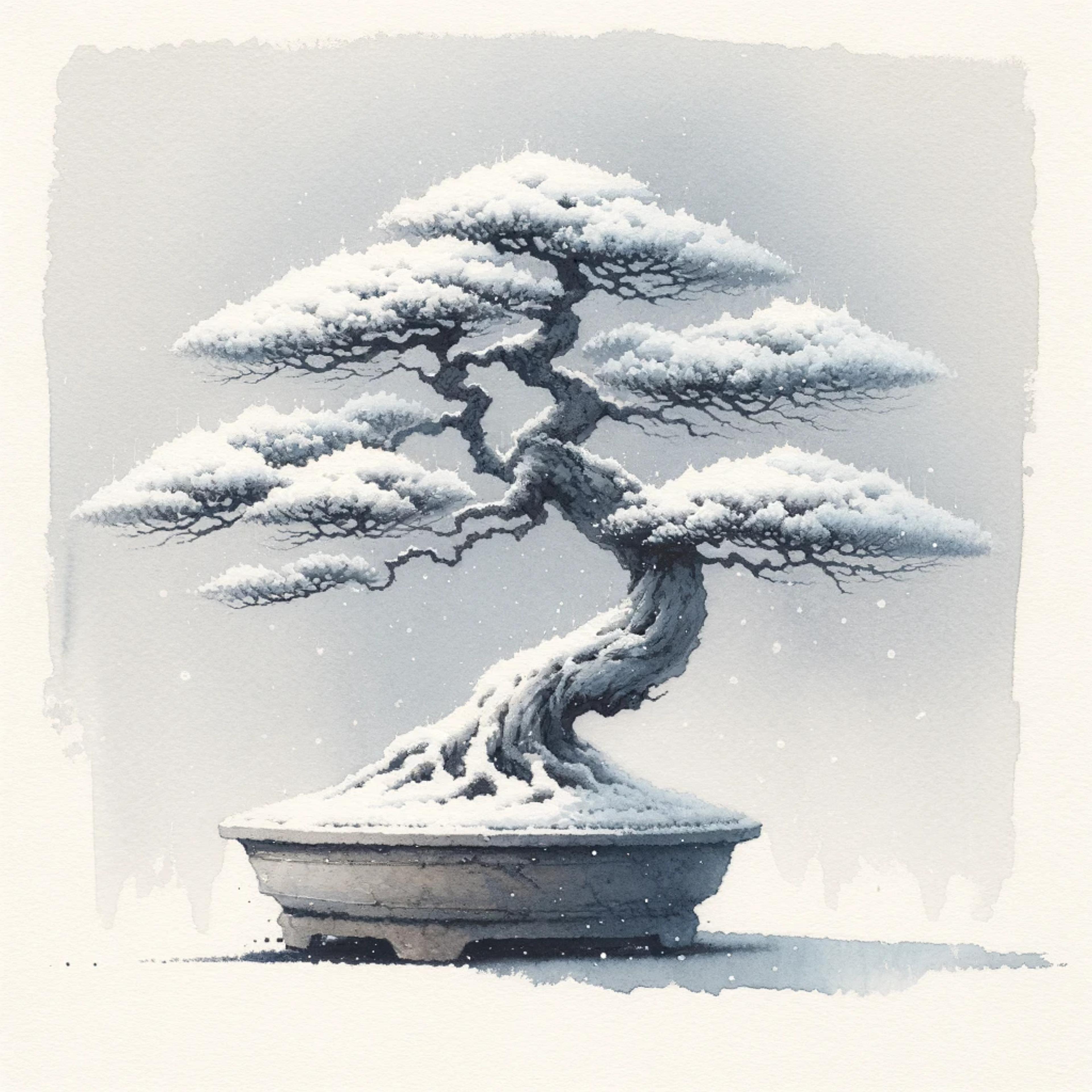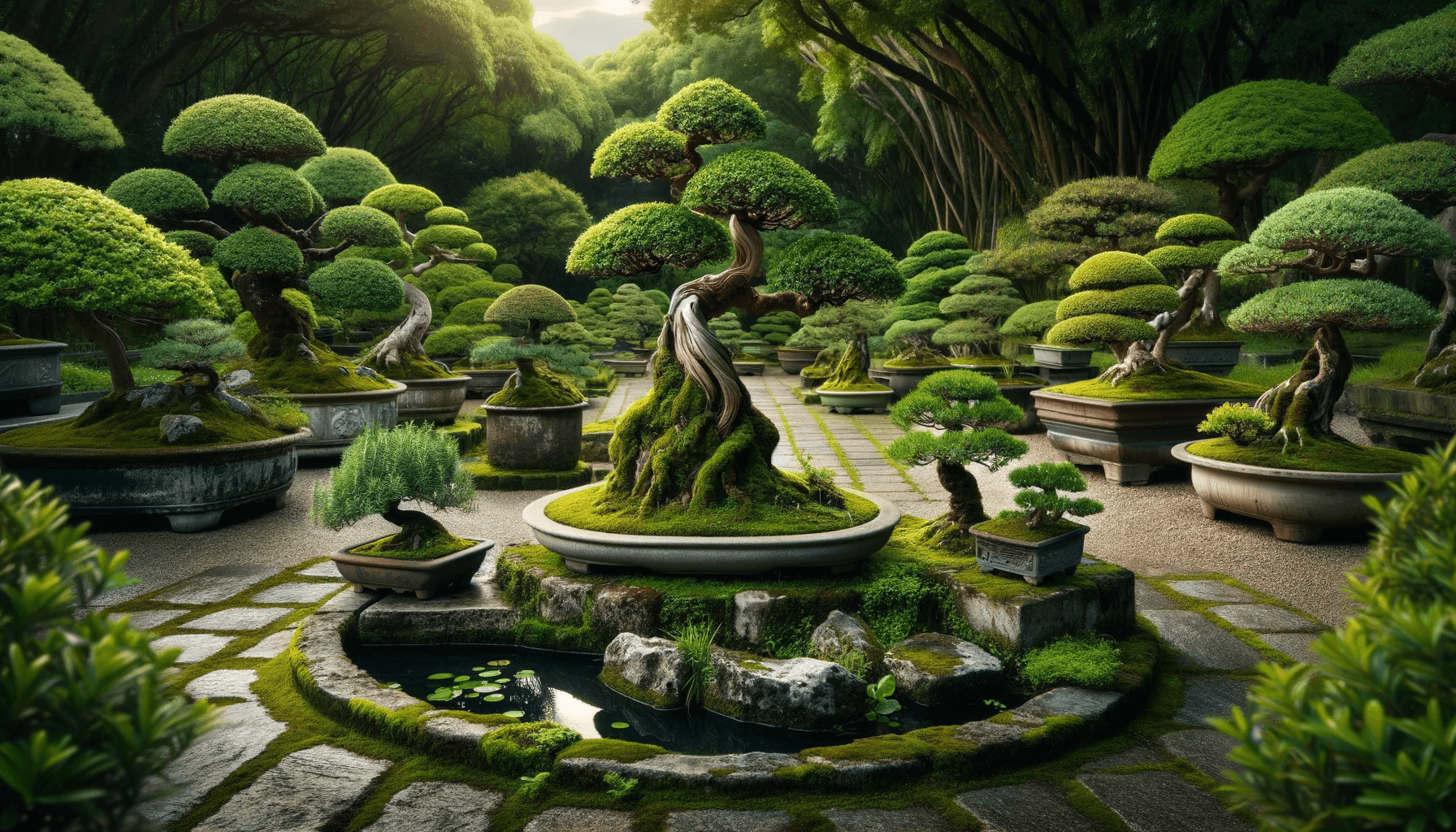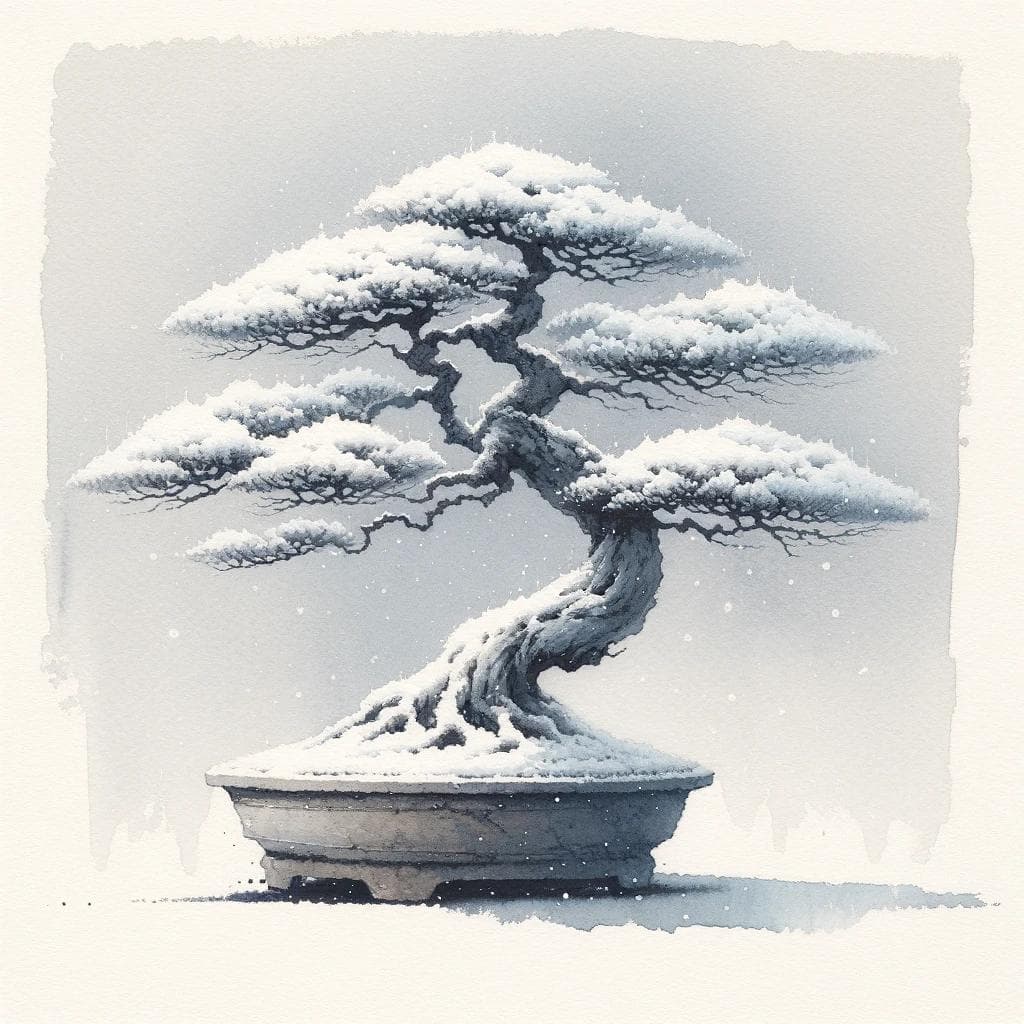Winter Do's and Don'ts for Bonsai: Keep Your Tiny Trees Thriving Through the Chill

Winter can be a tricky time for bonsai enthusiasts. The cold temperatures and reduced sunlight can pose challenges for these miniature trees. But fear not! With proper winter care, your bonsai can not only survive but thrive during the colder months. Here's a quick guide to the do's and don'ts of winter bonsai care:
Do's:
- Wiring: Winter is the perfect time for wiring, as deciduous trees have shed their leaves, making the branches more accessible. Use this opportunity to shape and position the branches for spring growth.
- Watering: While your bonsai won't need as much water in winter as it does in summer, don't let it dry out completely. Check the soil moisture regularly and water deeply when the top inch or two feels dry.
- Check for wire bite: As branches thicken over time, wires can dig into the bark, causing damage. Inspect your bonsai regularly and remove or reposition wires that are biting into the bark.
- Repotting (for some): While major repotting is best done in spring or early summer, minor root work or repotting for urgent reasons can be done in winter for hardy species that are already dormant. However, avoid repotting tropical or subtropical bonsai indoors.
- Overwintering: Proper overwintering is crucial for the health of your bonsai. Choose a suitable location that provides protection from harsh winds, freezing temperatures, and excessive sun exposure. You can find detailed information on overwintering techniques in the provided Reddit wiki link.
- Yamadori/Yardadori collection: If you live in a mild climate and have a good overwintering setup, you might be able to collect yamadori (wild trees) or yardadori (garden trees) in winter. However, this is only suitable for certain species and requires careful planning and execution.
Don'ts:
- Fertilize (unless indoors): Bonsai in their winter dormancy don't need fertilizer. Hold off on feeding until spring growth resumes. However, if you have tropical bonsai indoors that continue to grow actively, you can continue fertilizing them at a reduced rate.
- Major pruning: Save the big pruning cuts for spring. Winter pruning can stress the tree and make it more vulnerable to frost damage.
- Overwater: While underwatering is bad, overwatering is equally harmful in winter. Soggy soil can lead to root rot and other problems.
- Air layering: Air layering is best done during the growing season, typically spring or summer. Avoid attempting it in winter when the trees are dormant.
- Take cuttings (unless protected):Taking cuttings in winter is generally not recommended, especially for outdoor bonsai. The success rate is low, and the cuttings are more susceptible to frost damage. If you must take cuttings, ensure they have adequate protection and winterize them carefully.
By following these simple do's and don'ts, you can help your bonsai trees stay healthy and beautiful throughout the winter. Remember, winter is a time for rest and recuperation for your bonsai. With proper care, your tiny trees will be ready to burst back into life when spring arrives.
Bonus tip: During winter, keep an eye out for pests and diseases. While they are less active in cold weather, they can still pose a threat to your bonsai. Regularly inspect your trees and take appropriate action if you notice any problems.
Read More

The Art and Science of Bonsai: Understanding Its History and Cultural Significance

Your Definitive Guide to Understanding Seasonal Bonsai Care
![Best Bonsai Books [2025 Update]](/_next/image?url=https%3A%2F%2Fcdn.sanity.io%2Fimages%2Fux39rpmr%2Fproduction%2F078afd86481d7e9a6dcef12154fbb2bf88545f88-1024x1024.png&w=3840&q=75)
Best Bonsai Books [2025 Update]
BonsaiCourses.com is dedicated to offering comprehensive educational content on bonsai art and cultivation. While our site may include affiliate links for bonsai products and tools, our recommendations are based on our expertise and commitment to quality. As an Amazon Associate I earn from qualifying purchases. Any purchases made through these links may earn us a commission at no extra cost to you.